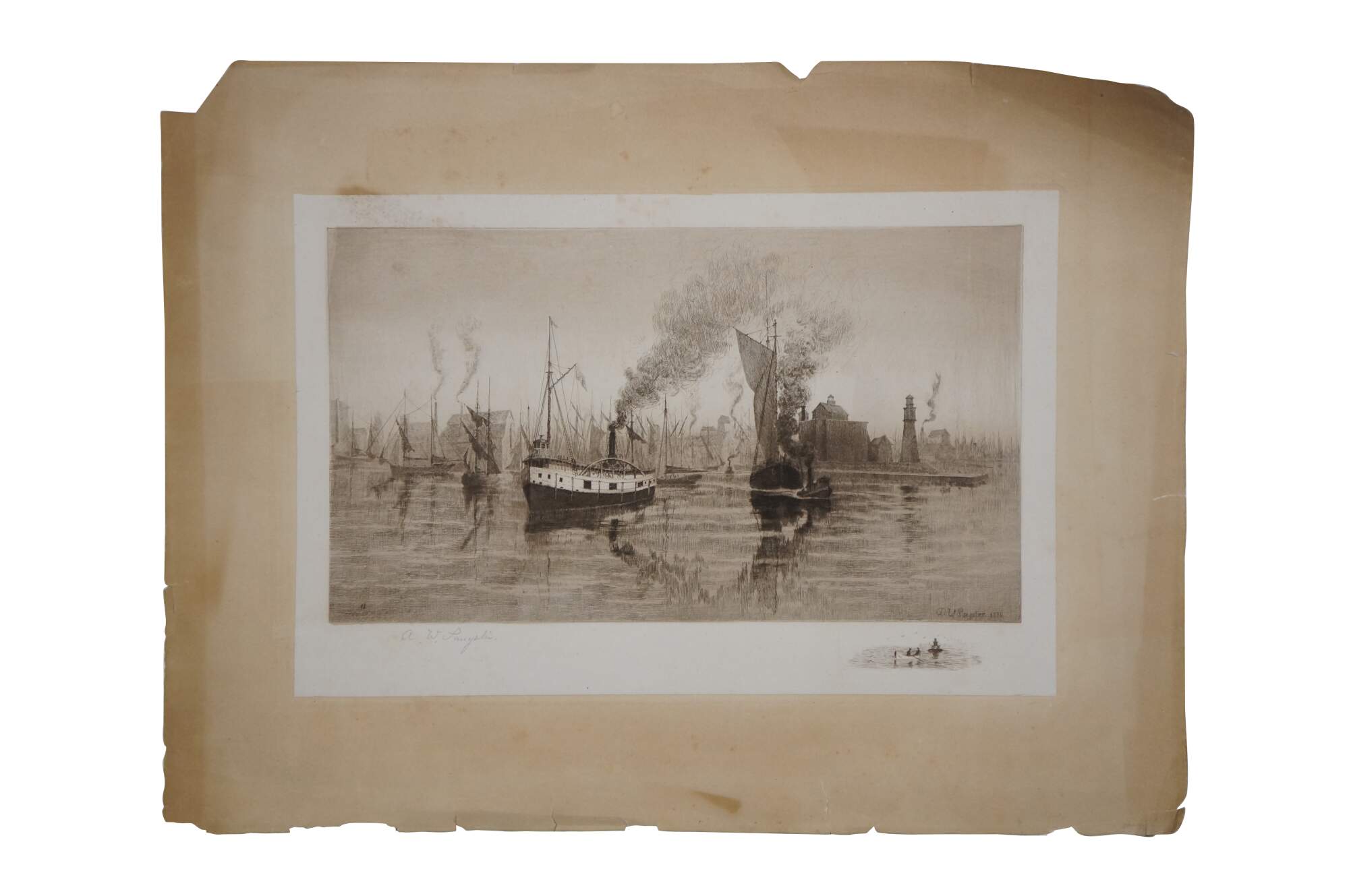
Shipping:
Free Shipping Included
Delivery:
Estimated 2-15 Business Days
Payments:
Credit Card, Check, Cash, PayPal, Apple Pay, Venmo
Returns:
30 Days 100% Money Back Guarantee, Buyer Pays Return Shipping
Description
Late 19th century black and white nautical seascape sailboat / boats etching of Buffalo Harbor by Amos W. Sangster, taken from the folio "Niagra River and Falls - From Lake Erie to Lake Ontario." Copyright 1886. Pencil signed, lower left. Remarke of a rowboat by a bouy, lower edge. Signed in plate/dated 1886. Heavy paper; unframed.
"Amos W. Sangster (1833-1904) was a Canadian-born, Buffalo-based nineteenth-century landscape painter, printmaker, educator, and arts advocate. In his own time, he was widely known as “the painter of the Niagara Frontier.” He was born in Kingston, Ontario, on February 5, 1833, the second of twelve children in a family of artists. The family first moved to Buffalo in 1834, relocated for a time to Newark, Ohio, then returned to Buffalo for good in 1844. In his spare time, Sangster carved wood and painted; he briefly studied to become a Methodist minister, then turned his attention full-time to art. Sangster famously took no more than two formal lessons in his entire life; getting nothing out of them, he resolved to teach himself how to paint. Beginning in the 1850s he supported himself for many years by working as a specialist in wood engraving for the Courier Company, a major American lithographic company. In his off-hours, he began spending more and more time outdoors sketching and painting watercolors of well-known landmarks in Erie and Niagara counties. In 1879 he began working on a collection of original drawings and watercolors on which he would base his monumental series of 153 etchings entitled Niagara River and Falls from Lake Erie to Lake Ontario. Following the entire thirty-six-mile course of the river from one lake to the other, he first sketched his scenes on location and later completed his etchings in his studio. Dedicated to Sangster’s friend, Grover Cleveland, the unprecedented undertaking was one of the greatest publishing feats of its era and served as an important historic record of the region in the late 1800s. Sangster’s later work was influenced by American Impressionism and featured a brighter palette than he was originally known for. He also played a key role in the formation of two major cultural institutions in the region: along with Lars Gustaf Sellstedt and several prominent Buffalo businessmen, he helped found the Buffalo Fine Arts Academy, and in 1891 he became a charter member of the Buffalo Society of Artists, serving as its first vice president." (Burchfield Penny)
Condition
Wear and distressing from age, spots/discoloration/foxing; damage to edges
Dimensions
19.75" x 14.75" (Width x Height)